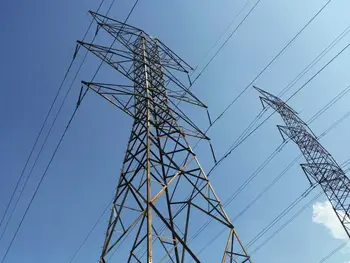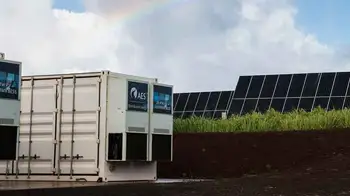How is energy storage useful on a grid scale?
By R.W. Hurst, Editor

Battery Energy Storage Testing and Maintenance for Solar PV Systems
Our customized live online or in‑person group training can be delivered to your staff at your location.

- Live Online
- 12 hours Instructor-led
- Group Training Available
Download Our OSHA 4475 Fact Sheet – Being Aware of Arc Flash Hazards

- Identify root causes of arc flash incidents and contributing conditions
- Apply prevention strategies including LOTO, PPE, and testing protocols
- Understand OSHA requirements for training and equipment maintenance
Energy storage and the grid deliver renewables integration, frequency regulation, and peak shaving via BESS, power electronics, and microgrids, enhancing demand response, grid resilience, and stability across transmission and distribution.
What Is Energy Storage and the Grid?
Systems linking BESS and the power grid to balance supply, integrate renewables, and deliver ancillary services.
✅ BESS provides peak shaving, frequency regulation, and fast reserves
✅ Inverters and EMS deliver safe, grid-forming and grid-following control
✅ Supports demand response, microgrids, black start, and islanding
Energy storage is helpful on a grid scale because it can help improve the stability and reliability of the electrical power grid by addressing the challenge of intermittencies inherent in many renewable energy sources, such as wind and solar. Energy storage systems help to address this issue by storing energy when it is abundant and releasing it when it is needed, thus ensuring a more reliable and stable energy supply. For readers new to the concept, this overview of what energy storage is clarifies the technologies involved and their grid applications.
On a grid-scale, energy storage can be used in several ways to improve the stability and reliability of the electrical power grid: Understanding why we need energy storage helps frame these use cases for operators and policymakers.
Meeting peak demand: Energy storage systems can store excess energy generated during periods of low demand and release it during peak demand. This helps to reduce the need for fossil fuel-powered plants, which are typically only used to meet peak demand. Recent growth in utility-scale energy storage has expanded capacity to shave peaks across diverse markets.
Improving grid stability: Energy storage systems can help to improve grid stability by providing frequency regulation and voltage support. When there is excess energy on the grid, the frequency can increase, which can cause instability. Energy storage systems can absorb extra energy, helping to stabilize the frequency. Similarly, energy storage systems can provide voltage support by injecting fuel into the grid when the voltage drops, helping to stabilize the grid. Different energy storage fuel sources influence response speed and duration during frequency events.
Sign Up for Electricity Forum’s Energy Storage Newsletter
Stay informed with our FREE Energy Storage Newsletter — get the latest news, breakthrough technologies, and expert insights, delivered straight to your inbox.
Deferring the need for grid infrastructure upgrades: Energy storage systems can delay transmission and distribution infrastructure upgrades by reducing peak demand. By reducing peak demand, energy storage systems can help reduce the need for new transmission and distribution infrastructure, which can be expensive and time-consuming. Modular stackable energy storage systems allow utilities to add capacity incrementally as loads grow.
Providing backup power: Energy storage systems can provide backup power in the event of a power outage or black-out. This can help improve the grid's reliability and reduce the impact of power outages on homes and businesses. In areas with prolonged outages, advances in long-term energy storage improve resilience for critical facilities and communities.
Overall, energy storage is a critical technology for improving the stability and reliability of the electrical power grid, particularly as more and more renewable energy sources are integrated into the grid. By addressing the challenge of intermittency and providing a reliable and stable energy supply, energy storage systems can help to support the transition to a clean energy future. These benefits underline why energy storage is important for an affordable, decarbonized electricity system.




